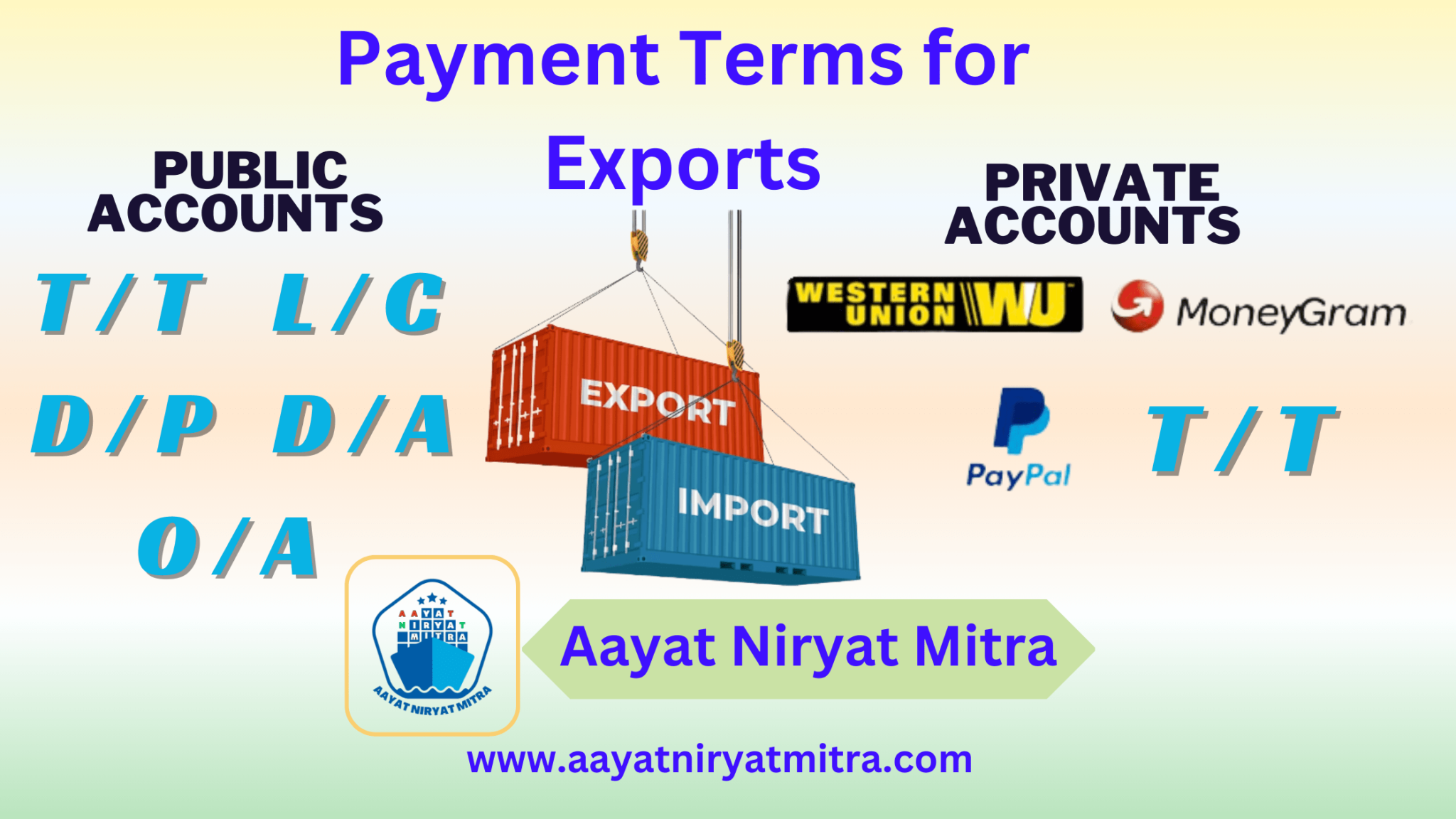Explore a comprehensive guide to various payment terms for exports, including T/T, L/C, D/P, D/A, O/A, Western Union, Paypal, and MoneyGram. Learn when and how to use each method for secure international transactions.
In the world of international trade, choosing the correct payment terms is critical to completing successful and safe transactions. Different payment methods are available to meet the various demands of exporters and importers. In this comprehensive guide, we will look at a variety of payment terms typically used in exports, such as T/T, L/C, D/P, D/A, O/A, Western Union, Paypal, and MoneyGram, to learn how they work and when to use them.
Understanding Payment Terms for Exports
T/T (Telegraphic Transfer)
What Is T/T?
Telegraphic Transfer (T/T) involves electronically transferring funds from the buyer’s bank to the seller’s bank. It is known for speed, security, and global acceptance.
L/C (Letter of Credit)
What Is L/C?
Telegraphic Transfer (T/T) involves electronically transferring funds from the buyer’s bank to the seller’s bank. It is known for speed, security, and global acceptance.
D/P (Documents against Payment)
What Is D/P?
In a Documents against Payment (D/P) transaction, the seller ships the goods and presents shipping documents to the buyer’s bank, receiving payment upon delivery.
D/A (Documents against Acceptance)
What Is D/A?
Documents against Acceptance (D/A) is similar to D/P, but the buyer receives the shipping documents and agrees to pay at a specified future date.
O/A (Open Account)
What Is O/A?
In an Open Account (O/A) arrangement, the seller ships goods to the buyer, who agrees to pay at an agreed-upon future date.
Western Union
What Is Western Union?
Western Union is a global financial services company that facilitates international money transfers, often used for small transactions.
Paypal
What Is Paypal?
Paypal is an online payment platform widely used for e-commerce transactions. It allows users to make secure payments and receive funds electronically.
MoneyGram
What Is MoneyGram?
MoneyGram is a money transfer service that allows people to send and receive money. It is commonly used for remittances and small transactions.
Choosing the Right Payment Method
The ideal payment method is determined by many factors, including the level of trust between buyer and seller, the nature of the items, the buyer’s creditworthiness, and the transaction’s complexity. Each method has advantages and disadvantages, and it is critical to match the payment terms to the needs of the trade transaction.
Risks and Considerations
While these payment methods provide flexibility, security, and convenience, they also include risks such as currency exchange rates, bank fees, and the requirement for clear contracts that establish payment terms and conditions.
FAQs on Payment Terms for Exports:
-
Q: What are payment terms in international trade?
Ans: In international trade, payment terms outline how and when a buyer will compensate a seller for products or services. They specify the financial details of a trade transaction and guarantee that payment responsibilities are understood.
-
Q: What are the common payment terms for exports?
Ans: T/T (Telegraphic Transfer), L/C (Letter of Credit), D/P (Documents against Payment), D/A (Documents against Acceptance), O/A (Open Account), Western Union, Paypal, and MoneyGram are common payment terms for exports.
-
Q: What is T/T (Telegraphic Transfer) in exports?
Ans: T/T, or Telegraphic Transfer, is a method of electronically transferring funds from the buyer’s bank to the seller’s bank. It is well-known for its speed, security, and worldwide acceptance.
-
Q: What is an L/C (Letter of Credit) in exports?
Ans: An L/C is a financial guarantee given to the seller by the buyer’s bank. It guarantees that the seller will be paid if certain conditions outlined in the L/C are met.
-
Q: How does D/P (Documents against Payment) work in exports?
Ans: The seller ships the goods and delivers shipping documents to the buyer’s bank in a D/P transaction. Payment is made when the goods are delivered.
-
Q: What is D/A (Documents against Acceptance) in exports?
Ans: D/A is similar to D/P, however, the buyer obtains the shipping documentation and agrees to pay at a later date.
-
Q: What is O/A (Open Account) in exports?
Ans: In an O/A contract, the vendor ships items to the customer, who agrees to pay at a later date.
-
Q: How does Western Union work for international transactions?
Ans: Western Union is a global financial services firm that specializes in international money transfers. It is frequently used for minor transactions and remittances.
-
Q: What is PayPal, and how is it used in exports?
Ans: PayPal is a secure online payment platform that allows for electronic payments and fund transfers. It’s common in e-commerce transactions.
-
Q: What is MoneyGram, and when is it used for exports?
Ans: MoneyGram is a money transfer service that allows people to send and receive money. It is commonly used for remittances and small transactions.
-
Q: How do I choose the right payment method for my export transaction?
Ans: The suitable payment method is determined by elements such as the buyer’s and seller’s trust, the nature of the items, the buyer’s creditworthiness, and the transaction’s complexity. Payment terms must be tailored to the individual needs of the trade.
-
Q: What are the risks associated with international payment terms?
Ans: Currency exchange rate changes, bank fees, and the necessity for precise, well-defined contracts outlining payment terms and conditions to avoid disputes are all risks.
-
Q: Can payment terms be negotiated in international trade?
Ans: Yes, payment arrangements can be established between the buyer and seller to meet both parties’ individual needs and preferences.
-
Q: Is there a universally accepted payment term in international trade?
Ans: There is no such thing as a one-size-fits-all payment period. Payment terms are determined by a variety of circumstances, and it is critical to select the best alternative for each trading transaction.
-
Q: Where can I find more information on payment terms for exports and international trade?
Ans: You can explore our blog for further information and in-depth insights, or you can refer to international trade materials and guidance supplied by trade organizations and government agencies.
Conclusion:
Finally, understanding the various payment arrangements for exports is critical for international commercial success. Whether you’re an exporter searching for secure and effective payment solutions or an importer looking for flexibility and convenience, this thorough guide provides you with the information you need to make informed payment method decisions.
It is critical to speak with a skilled trade specialist before using Payment Terms for Exports to understand your specific needs and responsibilities.
If you discover an error in the “Payment Terms for Exports: A Comprehensive Guide 2024” information provided to us, please notify us immediately via the comment box and email; if the information provided by you is correct, We will change it.
If you enjoyed this article, please share it with your friends. Please visit Aayat Niryat Mitra for more information on this and other topics. Thank you for stopping by.


11 thoughts on “Payment Terms for Exports: A Comprehensive Guide 2024”